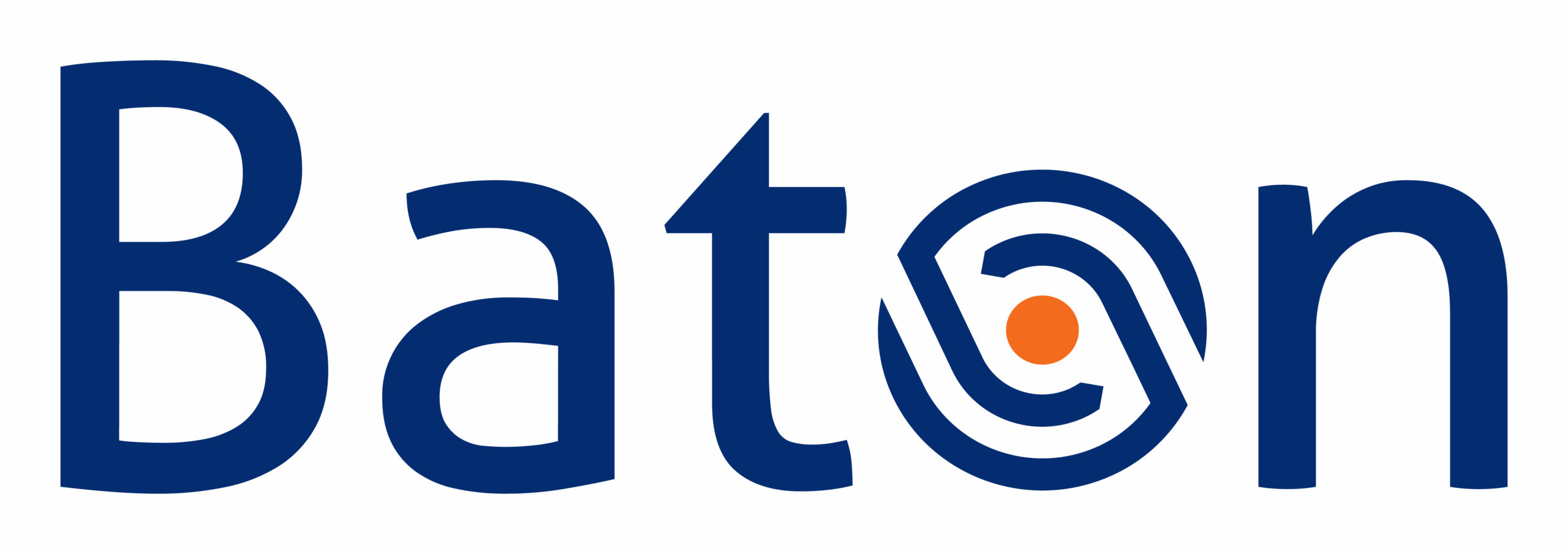Welcome to the most recent edition of CORE Thoughts, discussing the benefits distributed ledger technology (DLT) presents to capital market infrastructure, the differences between a blockchain and DLT and how we have used DLT to architect the Baton CORE™ platform.
The benefits distributed ledger technology offers to capital markets
Significant investment in front office trading technology means trades can now be executed in a nanosecond. This level of efficiency has generated an exponential growth in trading volumes. Yet the processing of trades meets a bottleneck at the banks’ middle and back office systems which are markedly slower, often involving manual operations. Leading to the question: How can post-trade systems be re-engineered to attain efficiencies closer to those of front office systems?
Let’s first consider the functions these middle and back office systems actually perform in practice. They consist of complex business processes, often under a contract like ISDA involving operations teams across financial institutions, each using a series of hardwired, siloed and inflexible technologies. Most of these processes or technologies have not changed much in the last 20-30 years. So the large volume of front office trades being fed into the post-trade plumbing are required to move through processes that haven’t kept pace with changes to the business.
This has resulted in significant inefficiencies across the entire post-trade process. These inefficiencies lead to increased costs, significant delays and substantial risk to all participants. It is this inherent inefficiency in the base technologies powering middle and back office systems where applying DLT could prove transformative.
The winning features of a DLT platform we like to summarise as TWA: Transparency, Workflow and Auditability. Let’s explore why these are important.
Transparency
When constructing systems to execute and process huge volumes of trades across multiple institutions – transparency is critical. To have 360 degree, real-time visibility of these trades across institutional boundaries creates opportunities to integrate and streamline workflows and makes every step of the process completely auditable. Transparency enables banks to create digital workflows with powerful new features that were previously unfeasible.
Workflow
Domain models: Post-trade processes are executed within the context of a legal framework and/or a rulebook. Domain models such as the common domain model enable the digitisation of post-trade events, actions and workflows with the context of a “digital contract” that mirrors (or mimics) the contracts that exist and are agreed to between institutions today. This along with the relevant rulebook provides the framework for enforceability of the workflow processes between members.
Smart contracts: A smart contract is a piece of software that is processed by a distributed ledger or a blockchain. It’s essentially a software module that formalises and executes agreements between participants and comes with inbuilt compliance and controls. Our view is that the software needs to be combined with a strong rulebook that defines the roles, responsibilities, liabilities and legal agreements and compliance to existing business processes rules as well as rules relating to the exchange of assets and liabilities. Further, a rulebook should also define the roles of the various stakeholders – participants, technologies, operators and intermediaries (which may or may not be financial institutions), as well as clearly articulate the steps in automation. We believe that this is what makes the software “Smart” and a “Contract”. At Baton, we refer to our use of Smart Contracts as distributed workflows.
Auditability
When dealing with high value transactions it’s essential to have end-to-end auditability of the lifecycle of the trade or business process. To achieve this, being able to view the complete lineage from the moment the trade entered the process to its termination, often spanning operations over 12 months or longer is preferable. Well designed DLT systems with a domain model provide that lineage in a tamper-resistant, fully automated and auditable manner.
It’s this unique combination of transparency, workflow and auditability possible through the use of DLT that really enables financial institutions to address the issues of cost, delay and risk they face with their existing post-trade infrastructure at their very core.
Differences between distributed ledger technology and blockchain in the context of financial markets
There’s been a great deal of discussion on this topic recently and I think it’s important to bring it back to first principles to understand the key differences between DLT and blockchain.
First, let’s consider the differences between public and private/permissioned blockchains.
Trust is essential with the public blockchain. The public blockchain operates a peer-to-peer model in which no individual entity is seen as trusted. Rather, it is the community in its entirety that creates trust via the use of a shared, unalterable digital record.
This is quite different from the permissioned blockchain which actually operates in an intermediary format. Here we have a trusted intermediary – a third party – which is helping govern the interactions between peers.
I am not saying that one is better than the other, but it’s clear that the world that we’re working towards, which is likely to include a very different set of requirements in 2030 than it does today, will likely include both public blockchains and private/permissioned blockchains.
If we turn to the transition between the public and the private/permissioned blockchains, at Baton we view the latter as much closer to distributed ledgers and in my experience there are various instances where they’re more appropriate for the structure of today’s financial markets.
Why we architected the Baton CORE platform using distributed ledger technology
Our roadmap aimed at solving a very specific problem: securely speeding up clearing and settlement across institutions and radically reducing the significant level of risk exposure existing practices introduce today. We felt that the most effective way to do that was by bringing a spirit of transparency, speed and auditability to these processes.
We also had to make sure our solutions would interoperate with the existing business processes, systems and operating rules of financial institutions. We realised that there were certain gaps in the functionality offered by both private/permissioned and public blockchains. Public blockchains were not an option for private high value contracts, so we went with the private/permissioned route. But even that had pretty significant challenges.
The challenges primarily stemmed from facilitating the constant interactions with core systems. Let’s take as an example an intermediary that is extending credit to a counterparty. It has to ask: Does this entity have sufficient credit in order to execute this transaction? The process must accommodate constant inputs and outputs to the chain. This is where both private and public/permissioned technologies have brittle characteristics – which inevitably break in operation.
As a result, at Baton Systems we used DLT to build in seamless gateways by which we are able to interoperate with the core systems and the core business processes of a bank such as core ledgers, payment gateways and messaging systems using secure access protocols, adapters and APIs. In doing so, we also brought in the transparency, auditability and workflow constructs of the blockchain. This is the foundation upon which we constructed our game-changing fully customisable, smart workflows that sit at the heart of our Baton CORE platform that powers our Core-FX™, Core-Liquidity™, Core-Payments™ and Core-Collateral™ solutions.
I hope I’ve helped clarify the key differences between blockchains and DLT in capital markets and how Baton Systems is using DLT to deliver benefits to our clients in the post-trade environment. Please don’t hesitate to reach out with any questions on this or other aspects to me or our team by emailing [email protected].

